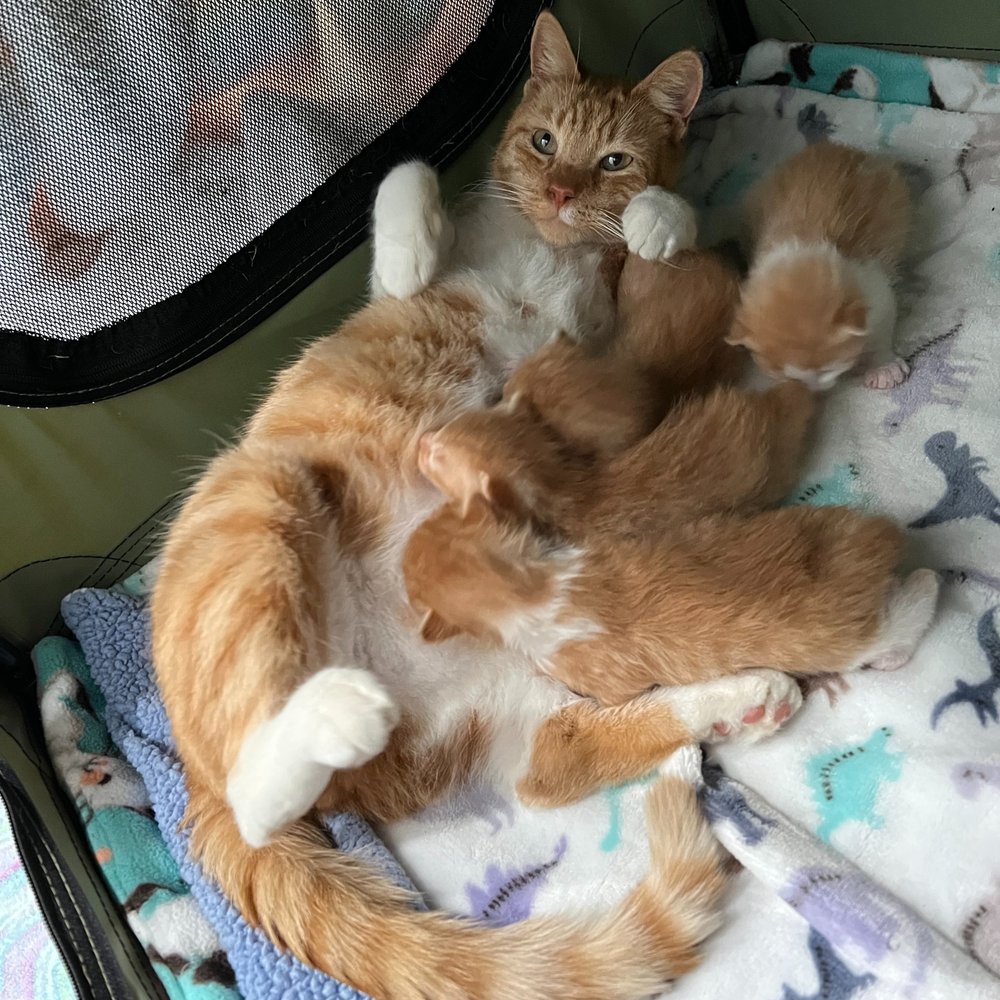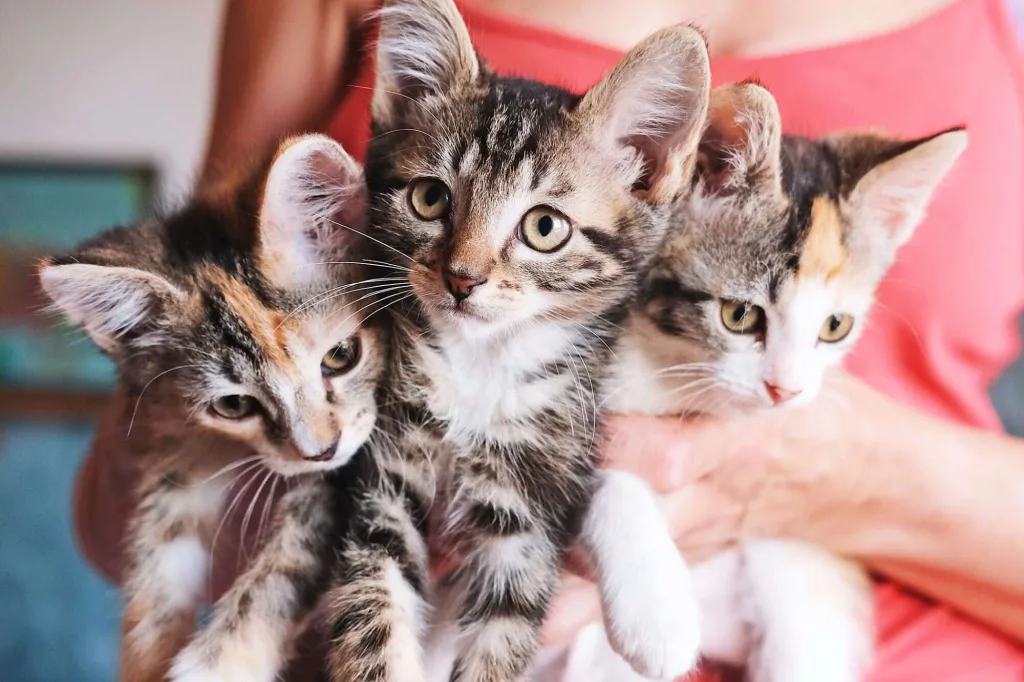Cats are beloved pets and integral members of many households. They’re also incredibly resilient creatures, capable of giving birth to litters of kittens in a relatively short period of time. But what about cats that are still nursing their young? Can they get pregnant again?
The short answer is yes, cats can get pregnant while nursing. It’s important to understand the reproductive cycle of cats if you’re planning on gettig one spayed or neutered. A cat’s oestrus cycle, or heat cycle, usually lasts anywhere from 7-10 days, and they can go into heat as early as 5 months old. During this period they’re fertile and able to become pregnant if mated with a male cat.
Female cats that are still lactating can become pregnant during this period, although it isn’t recommended for their health or for the health of the kittens being nursed. If a female does become pregnant while lactating, she will generally come back into season 8 weeks after the birth of the kittens (with a range of 1-21 weeks). This usually coincides with the time the kittens are weaned.
It’s important to note that lactation does not suppress the heat cycle in cats, so it is crucial to get them spayed or neutered as soon as possible if you don’t want them reproducing any further. Common signs that your cat may be pregnant include noticeable weight gain in a few weeks, swollen and pink nipples (called “pinking up”), and distended abdomen (noticeable around week five).
In conclusion, it is possible for female cats to become pregnant while nursing their young but it is not recommended due to potential health risks for both mother and offspring. If you do not plan on having additional kittens, make sure your pet is spayed or neutered right away so there are no unexpected pregnancies!
How Soon After Giving Birth Can a Cat Become Pregnant Again?
A cat can get pregnant aain as soon as 8 weeks after giving birth, though the average is closer to 12 weeks. In rare cases, a cat may go into heat again as soon as 4-6 weeks after giving birth, but this is not typical. The timing of when a female cat will come into heat again is largely dependent on when the kittens were weaned and how much rest and nutrition she has had since giving birth. It’s important to wait until the mother cat has fully recovered before allowing her to become pregnant again, otherwise she may be at risk of developing health issues due to inadequate rest and nutrition.

Can a Breastfeeding Cat Become Pregnant?
Yes, it is possible for a lactating cat to become pregnant. Nursing cats have an increased chance of becoming pregnant while they are still producing milk because they usually remain in heat (estrus) longer than cats that are not nursing. During estrus, female cats are fertile and can become pregnant if they come into contact with an unneutered male cat. Cats typically cycle through estrus every two to three weeks, so it is important to keep nursing cats separated from unneutered males in order to avoid unwanted litters.
Signs of Pregnancy in Nursing Cats
Nursing cats can be difficult to tell if they are pregnant, as the signs may not be as obvious as in non-nursing cats. However, there are some signs that may indicate a nursing cat is pregnant. For example, you may notice changes in her behavior such as increased affection or being more vocal. You may also observe a decrease in appetite and an increase in water consumption. Additionally, a nursing cat’s nipples may become enlarged and darker than usual. Finally, your cat may display signs of morning sickness such as vomiting or gagging. If you suspect your cat is pregnant, it is important to take her to the vet for confirmation. The vet will likely do a physical exam and possibly an ultrasound to determine if she is inded pregnant.
Can a Feral Cat Become Pregnant While Nursing?
Yes, it is posible for a feral cat to become pregnant while still nursing her kittens. In fact, female cats can get pregnant as young as 5 months old and can even become pregnant while they are still in the process of nursing their own litter. This means that if a female feral cat has recently given birth and she hasn’t been spayed yet, she may become pregnant again very quickly. Therefore, it is important to get your feral cat spayed as soon as possible in order to prevent any more litters from occurring. Additionally, spaying or neutering your pet can help reduce the population of unwanted cats in the area and also helps protect against certain diseases and health risks associated with not being fixed.
The Number of Kittens a One-Year-Old Cat Can Have
A one year old cat can have anywhere from one to nine kittens in a litter, though first-time queens usually have a smaller litter size. After the birth is complete, the mother will settle and allow the kittens to feed. It is possible for a one year old cat to have multiple litters throughout their life, but it is important to note that breeding should always be done responsibly with the health of both mother and kittens in mind.

Maximum Number of Kittens a Cat Can Nurse
A nursing mother cat can typically nurse up to six kittens at a time, though larger litters of up to eight may be possible. Nursing cats produce milk for their kittens that is high in fat, protein, and other nutrients essential for the kittens’ growth and development. The mother cat’s body will adjust the amount of milk produced depending on the size of her litter. The mother cat will also adjust her nursing habits to accommodate each kitten’s individual needs, such as taking breaks to feed the hungrier or weaker kittens more often than the others.
Duration of Mother Cat Breastfeeding
Mother cats typically breastfeed for 5-6 weeks, although this can vary depending on the individual cat. During this time, the mother provides her kittens with much-needed nutrition and antibodies that help protect them from illnesses. The kittens will also learn how to groom themselves from their mother and how to interact with other cats. As they get older, they may start to wean themselves off of their mother’s milk, usually around 4-5 weeks old. By 8 weeks old, the kittens should be able to eat solid foods and the mother’s milk will start to dry up. Some kittens will continue to nurse even up to 12 weeks old, though usually nursing to this age is mosty for the purpose of comforting the kittens rather than for providing nutrition.
Duration of Breastfeeding in Female Cats
Female cats typically breastfeed their kittens for up to 8 weeks, though the exact length of time can vary depending on the individual cat and kitten. During this period, the mother will produce milk to nourish her offspring and provide them with all the nutrients they need to grow and develop. Nursing usually begins soon after birth and continues until the kittens are weaned, which typically occurs between 4-8 weeks of age. In addition to providing milk, nursing also helps foster a bond between mother and kitten as well as helps promote socialization skills.
Duration of Breastfeeding for Mother Cats
A mother cat will usually nurse her kittens for up to eight weeks, though some may nurse for as long as twelve weeks. During this time, the mother cat will provide her kittens with all the nutrition and antibodies they need in order to grow and develop. Kittens should begin weaning from their mothers milk or formula at around four weeks of age, though it is important that the mother cat continues to provide them with milk until she feels they are ready for solid food.

Can Dogs Get Cats Pregnant?
No, a dog cannot get a cat pregnant. This is because dogs and cats have different reproductive systems, with different hormones and egg cells. The genetic makeup of a dog’s sperm is not compatible with that of a cat’s egg, so fertilization is impossible. Furthermore, the reproductive organs of dogs and cats are designed to fit only those of members of their own species, meaning that mating between them would be physically impossible. Therefore, even if a dog and cat were to attempt to mate, conception could not occur.
Mating Frequency for Cats to Become Pregnant
In order for a cat to get pregnant, she needs to mate three to four times within a 24-hour period. This is because cats are induced ovulators, meaning that the act of breeding stimulates the release of eggs from the ovaries. For this reason, it is important for cats to be bred multiple times in order for successful fertilization and pregnancy.
Touching Kittens After Birth
It is best to wait at least 2 weeks before handling the kittens. Kittens are born with very weak immune systems, so it’s important to give them time to build up teir strength before picking them up and handling them. Also, mom cats can be very protective of her babies during this time and may not take kindly to you handling them too soon. When you do start to handle the kittens, make sure to do it slowly and gently, and only after mom has had a chance to get used to your presence. Finally, make sure your hands are washed thoroughly before and after touching them.
Staying with a Cat After Birth
It is always best to let your cat take care of her kittens on her own to ensure she can settle into motherhood. However, you shuld keep an eye on your cat and her litter to make sure they’re all healthy and happy. If you notice any signs of distress or concern in either the mother or the kittens, contact your veterinarian as soon as possible. If everything appears to be going well, it’s generally best not to stay with your cat for long periods of time after she gives birth as this can be disruptive for her. It’s important that she is able to bond with her kittens and provide them with the care they need without interruption.

Conclusion
In conclusion, female cats can get pregnant as young as 5 months old and they can go into heat as soon as two weeks after giving birth. Cats will generally come back into season 8 weeks after the birth of their kittens, which usually coincides with the time the kittens are weaned. It is important to get a female cat spayed or neutered as soon as possible to avoid any unwanted pregnancies. By doing so, you can help reduce the number of stray cats in your neighborhood and ensure that your cat remains healthy and happy.
